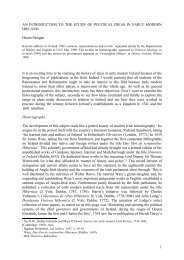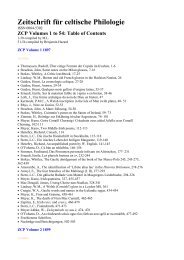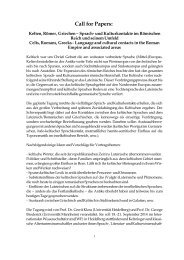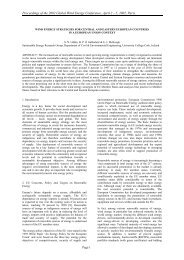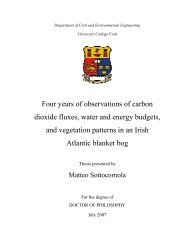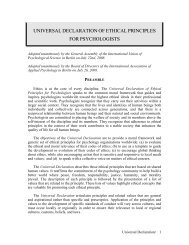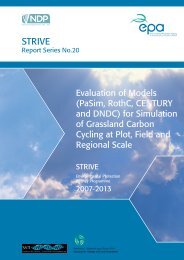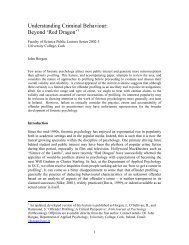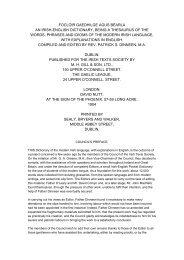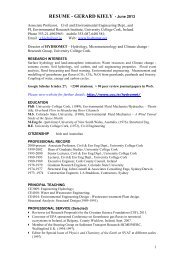2013 - University College Cork
2013 - University College Cork
2013 - University College Cork
Create successful ePaper yourself
Turn your PDF publications into a flip-book with our unique Google optimized e-Paper software.
RESEARCH PROJECTS<br />
62<br />
Geosciences and Coastal Processes<br />
IRISH SEA MARINE ASSESSMENT (ISMA)<br />
Research Centre/Department/School:<br />
School of Biological, Earth & Environmental Sciences<br />
Contact PI: Andy Wheeler (a.wheeler@ucc.ie)<br />
Researchers: Mark Coughlan, Boris Dorschel<br />
Start Year: 2010<br />
End Year: 2015<br />
Funding Body: Gaelectric Developments Ltd<br />
Funding: €91k<br />
The Irish Sea Marine Assessment (ISMA) is a collaborative research survey undertaken by <strong>University</strong><br />
<strong>College</strong> <strong>Cork</strong>, the INFOMAR programme (Geological Survey of Ireland & Marine Institute),<br />
and Gaelectric Developments Ltd. Its purpose is to produce integrated seabed and sub-seabed<br />
mapping products to assist in a fundamental understanding of the seabed and how it changes<br />
through time, thereby deriving information pertinent to the development of offshore renewable<br />
energy resources.<br />
Four study areas where surveyed. The Codling Deep is a long north-south deep (or channel) in<br />
which tidal currents flow strong. The seabed it typified by mobile sands and gravels, and areas<br />
covered by cobbles (stoney ground) rich in seabed life. The sub-seabed geology is complicated<br />
with localised drift bodies and numerous erosional surfaces. The next three areas are relatively flat<br />
and experience decreasing current intensity resulting in a decrease in seabed sediment-type particle<br />
size from sand (Lambay area) to fine sands (Rockabill area) to muds (Northern Mudbelt). All<br />
three areas show sub-horizontal layers of deposits below the seafloor consisting of sands to muds<br />
underlain by glacial diamict tills (muds with bolders) and rock. The Northern Mudbelt sub-seabed<br />
shows shallow accumulation of (biogenic) gas (although not enough to form a geohazard).<br />
In total 352.65 km2 (35,265 hectares) of seabed<br />
was mapped, 534 km of sparker seimic<br />
lines were shot imaging into the sub-seabed by<br />
50 m, 2179 km of pinger seismic lines (down<br />
to 30 m penetration) were also recorded. 269<br />
sediment samples were taken, 171 biological<br />
samples were taken with an additional 7 faunal<br />
samples frozen for DNA studies. 20 cores<br />
where sunk into the seabed up to a depth of 3<br />
m from as well as 5 Reineck box-cores which<br />
preserve the upper 30 cm for palaeoenevironmental<br />
and geotechnical studies. 975 good<br />
quality digital still photographs of the seabed<br />
were taken in 15 areas and a 1 month long<br />
measurements of variation in current speeds<br />
throughout the water column was also taken<br />
for one key location.



